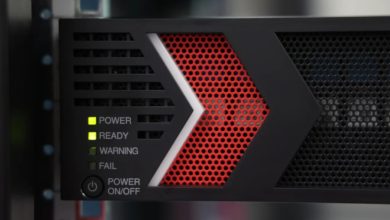
 We pride ourselves at Data & Storage Asean on always keeping up to date on the latest in backup and data protection. So, I would not be forgiven if I didn’t find time to seek out Rob Emsley, Dell’s Director of Data Protection Product Marketing, at Dell Technologies World 2023.
We pride ourselves at Data & Storage Asean on always keeping up to date on the latest in backup and data protection. So, I would not be forgiven if I didn’t find time to seek out Rob Emsley, Dell’s Director of Data Protection Product Marketing, at Dell Technologies World 2023.
I managed to have a quick catch-up with Rob, and first on my list was to understand how integrated the data protection suite is with the other APEX announcements around Dell’s multi-cloud strategy and vision to make all clouds on all platforms manageable from one place.
Backup and backup appliances are not typically at the front of the queue for grabbing headlines, so it is not surprising that the announcements here deal with multi-cloud, AI, and accelerating human innovation. However, the truth is, no matter how much hype we hear about AI or metaverses and the like, backup and data protection never goes away and always remain a foundational part of any infrastructure, no matter how modernises and transformed it may be.
Rob went further and explained how, in many ways, the data protection suite has been ahead of the curve with Dell’s integrated backup appliances having been cloud-enabled across AWS, Azure, GCP and even Alibaba Cloud for quite some time.
These have had cross-cloud capability built-in, with replication of backups between appliances on different public clouds also being available for some time.
Now, with Dell’s announcements for APEX block and file storage for public cloud being made this week, opportunities for further integration with the data protection suite clearly exist. While complete automation is not available out of the Box, Rob explained that comprehensive REST API availability makes automation between Dell cloud primary storage and secondary storage achievable here and now.
For example, if data currently on Dell Cloud storage for public cloud were moved to an on-premises instance, it would be achievable to use automation tools such as Ansible to automatically reconfigure the appliance to redirect its protection to the new location of that data.
Likewise, it would be possible for a Dell public cloud-based backup appliance to be moved to an on-premises cloud instance in the same way as the primary storage.
The net is that Dell’s cloud-based data protection offerings already have the “multi-cloud by design” capability that Michael Dell talked about in his keynote to kick off the event.
That said, one of the things about backup technologies is they are an indicator of “truth”. By this, when you track backup business and what backup solutions are being sold, you get a very good idea of where data and infrastructure still reside.
Rob confirmed that their on-prem backup business in Asia which is still dominated by the backup target (Data Domain) technology, still takes a significant share of their data protection business. This includes not just Dell backup software clients, but as many as half of the users of this technology connect to it from third-party non-Dell backup solutions such as Veritas and Veeam, etc.
It’s a great indicator that a significant amount of data still sits on-prem, and technologies that help protect and manage large data sets that remain on-prem will continue to be necessary for many years to come.
You will hear Dell talking about “From Ground to Cloud” and “From Cloud to Ground,” and given how much data still sits on the ground, their multi-cloud strategy which includes public, colo, on-prem and edge, seems to make a lot of sense. The data protection products remain central and foundational to the mission.




